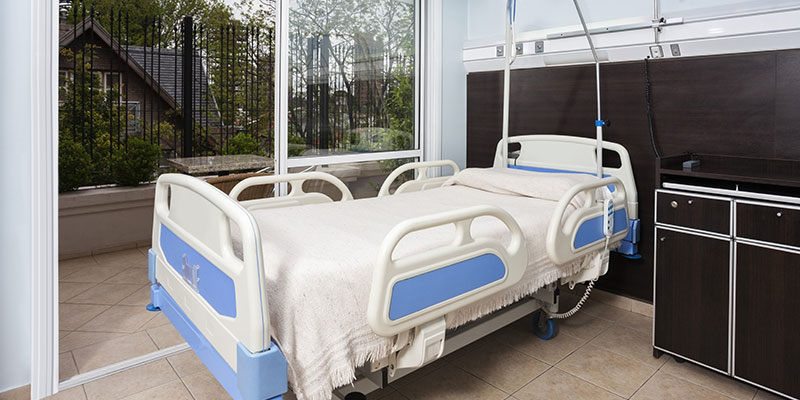Patient recovery can be a long and stressful period. So, the equipment used in the care and maintenance of a patient can be critical to quality of care and speed of recovery. The beds used for the patient are one such critical element. Selecting the right one to suit the patient’s needs is very important.
When you’re looking at long-term care, it is crucial that you select a suitable healthcare bed. The two types to select from are hospital beds and long-term care or nursing-home beds. Awareness of the pros and cons, similarities and differences between the two is limited. Even though both are geared towards patient comfort, healing and safety, each serves the patient in a different way. While one is equipped to provide inpatient care and ambulatory services, the other is perfected for convalescence and palliative care. This article will explore this topic in detail to equip you with the right information to make an informed decision about your purchase.
Understanding the Hospital Bed
The hospital bed is customized for a hospital environment where the patient is subjected to many procedures on different parts of the body. It is customized both for the comfort of the patient as well as for ease of treatment or examination by the medical staff. The first distinctive feature of a hospital bed is total adjustability. There are various controls and knobs that enable medical staff to keep the patient in comfort while allowing doctors to perform their treatment effectively.
The top of the bed can be adjusted so that the patient rests in the raised-head Fowler’s posture. For certain medical treatments, the patient’s feet have to be raised and the bed allows for this adjustment. Railings on the sides of the bed keep patients safe by preventing falls and act as support when they have to move on or off the bed.
The convenient control panel on the headboard allows patient or staff to adjust settings on the bed for comfort or ease of treatment. Some even give access to other hospital facilities like lighting, fans, air-conditioning, and TV. Typically, the foot of the bed has a storage area for patient charts.
Lockable wheels are another feature you will find on most modern hospital beds, making them easy to move and manoeuvre. Other functions include electronic adjustability functions and options to control patients like rails that can be adjusted and exit alarms.
The Nursing Bed or Long-term Care Bed
Beds that cater to patients on long-term convalescence are differently designed. These are typically designed for patients in nursing homes, palliative care or assisted living facilities, rehabilitation care centres, or patient homes. Typically, these patients have sufficiently recovered to obtain a discharge from the hospital, but are still dependant on others for daily living and self-care.
You will find that nursing beds are customized for the size and weight of the user. They offer greater adjustability in height to be raised much lower or higher than most other bed types. Adjustability in this way is useful for patients being treated for mental health conditions like dementia. Customization features like safety rails, wall bumpers, safety accessories like locks, adjustable tables, etc. can be added according to the needs of the patient.
Hospital Beds and Nursing or Long-term Care Beds: A Comparison
Patient care beds are designed for highly specific functions as hospital beds or term-care beds. Here’s a look at what factors differentiate each:
- Hospital beds and nursing homes beds differ most significantly in the way in which they have been designed for specific environments. Hospital beds provide comfort to the patient and ease of accessibility for the medical practitioner. They are designed for transport in
ambulances. Long-term or nursing care beds are designed specifically for nursing home use. - Hospital beds are designed so that they can be adjusted in multiple places, while long-term beds are not as flexible.
- Long-term beds are highly customizable. Side rails may not be included in all of them if they are not required. Hospital beds, on the other hand, always have side rails.
- Hospital beds may be more high-tech and come with control panels. These options are not available in long-term care beds.
- Hospital beds come in standard sizes, while long-term care beds are customized for age, size and condition of the patient.
- Long-term care beds have the high-low feature (height adjustability) which sets them apart from the hospital beds.
- Hospital beds are not as customizable as long-term beds since they come with all the features intact. Long-term beds can be as simple or high-tech as required by the patient.
The points of difference may seem insignificant at first glance. But when you consider patient comfort and safety, and the requirements for treatment, choosing the right bed can be very important.
Conclusion
It is quite difficult to decide whether you should choose a hospital bed or a long-term care bed. We hope that this article has shed some light on the subject and will ease the process for you, so that you can choose the right bed based on your purpose and need. For more help to choose the right bed for your requirement, contact the leading hospital bed manufacturer in Chennai.
